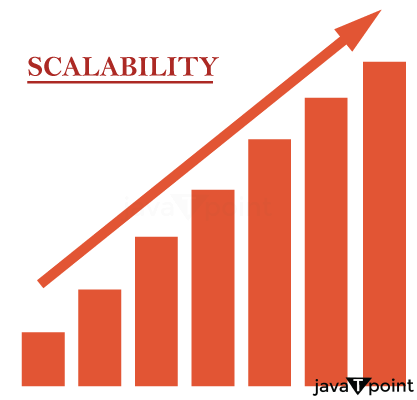Oracle Database Architecture
Introduction
Oracle Database is a widely used relational database management system (RDBMS) developed by Oracle Corporation. It is known for its robustness, scalability, and comprehensive feature set. Understanding the architecture of Oracle Database is essential for efficient management and utilization of the system.
The architecture of Oracle Database can be divided into two main components: the logical and physical structures.
Logical Structure:
- Database: At the highest level, Oracle Database is organized into one or more logical databases, also known as tablespaces. Each tablespace consists of multiple data files that store the actual data.
- Schema: A schema is a collection of database objects owned by a specific user. It includes tables, views, indexes, procedures, and other schema objects.
- Table: Tables are the fundamental data storage units in the Oracle Database. They hold the actual data in rows and columns.
- Indexes: Indexes are optional structures that enhance query performance by allowing quick access to specific data. They are created on one or more columns of a table.
- Views: Views are virtual tables derived from the data stored in one or more tables. They provide a customized and simplified view of the data to the users.
Physical Structure:
- Instance: An instance represents the Oracle Database running on a server. It comprises memory structures (System Global Area - SGA) and background processes. The SGA is divided into the database buffer cache, shared pool, redo log buffer, and more.
- Background Processes: Oracle Database has multiple background processes that perform tasks such as managing memory, I/O operations, recovery, and maintaining database integrity.
- Data Files: Data files are physical files stored on the operating system's file system or storage devices. They store the actual data of the database and are organized into tablespaces.
- Control Files: Control files are binary files that store metadata about the physical structure of the database. They contain information about the database name, data file locations, redo log file locations, and more.
- Redo Logs: Redo logs are files that record all changes made to the database. They are crucial for database recovery in the event of a failure.
- Archive Logs: Archive logs are copies of the redo logs archived and stored for backup and recovery.
Oracle Database follows a client-server architecture, where multiple client applications can connect to a single Oracle Database instance. The clients communicate with the database through Oracle Net Services, which manages network connectivity and authentication.
Understanding the Fundamentals of Oracle Database Architecture
To understand the fundamentals of Oracle Database architecture, let's delve into its key components and their interactions:
Instance:
An instance represents the Oracle Database running on a server. It comprises two major components: the System's Global Area (SGA) and background processes.
Database:
A database is a collection of physical and logical structures that store and organize data. It is divided into logical units called tablespaces. Each tablespace consists of one or more data files, the physical files that store the actual data.
Schema and Objects:
A schema is a collection of database objects owned by a specific user. It includes tables, views, indexes, procedures, and other schema objects.
Client-Server Architecture:
Oracle Database follows a client-server architecture. Multiple client applications can connect to a single Oracle Database instance. Clients communicate with the database through Oracle Net Services, which manages network connectivity and authentication.
Tablespaces:
A tablespace is a logical storage unit within the database. It comprises one or more data files and stores database objects like tables, indexes, and other schema objects.
Advantages of Oracle Database Architecture for Enterprises
Oracle Database architecture offers several advantages for enterprises. Here are some key benefits:
- Scalability:

Oracle Database architecture provides robust scalability options, allowing enterprises to handle growing data volumes and increasing user loads. It supports vertical scaling (adding more resources to a single server) and horizontal scaling (distributing data and workload across multiple servers).
- High Performance: Oracle Database is renowned for its high performance. It employs efficient memory management, caching, query optimization, and parallel processing to deliver fast and responsive data access and query execution. The database optimizer intelligently chooses the most efficient execution plans for queries, enhancing performance.
- Reliability and Availability:

Oracle Database architecture offers features and mechanisms for ensuring high data reliability and availability. Redundancy options, such as Oracle Real Application Clusters (RAC), Data Guard, and Automatic Storage Management (ASM), provide fault tolerance, automatic failover, and disaster recovery capabilities. These features minimize downtime and ensure data availability.
- Security:

Oracle Database incorporates robust security features to protect enterprise data. It supports various authentication methods, encryption algorithms, access controls, and auditing mechanisms to ensure data confidentiality, integrity, and regulatory compliance. Oracle Advanced Security provides additional encryption and data masking capabilities.
- Manageability:

Oracle Database architecture offers comprehensive tools and features for easy management and administration of the database. Oracle Enterprise Manager provides a centralized management console for monitoring, diagnostics, tuning, backup, and recovery operations. Additionally, features like Automatic Workload Repository (AWR) and Automatic Database Diagnostic Monitor (ADDM) assist in performance tuning and problem diagnosis.
- Extensibility and Integration: Oracle Database supports many programming languages, including SQL, PL/SQL, Java, and more. It allows enterprises to develop and integrate custom applications using various APIs and frameworks. Oracle Database can seamlessly integrate with other products and technologies, such as Oracle Fusion Middleware and Oracle Cloud services.
- Comprehensive Feature Set: Oracle Database offers an extensive feature set to cater to the diverse needs of enterprises. It includes advanced analytics, spatial and graph data management, multimedia support, XML and JSON handling, in-memory computing (Oracle Database In-Memory), and big data and cloud integration support.
- Support and Ecosystem: Oracle has a strong support system with regular updates, patches, and bug fixes. It also has a vast ecosystem of third-party tools, solutions, and community support, providing a rich resource for assistance, knowledge sharing, and best practices.
|
 For Videos Join Our Youtube Channel: Join Now
For Videos Join Our Youtube Channel: Join Now













